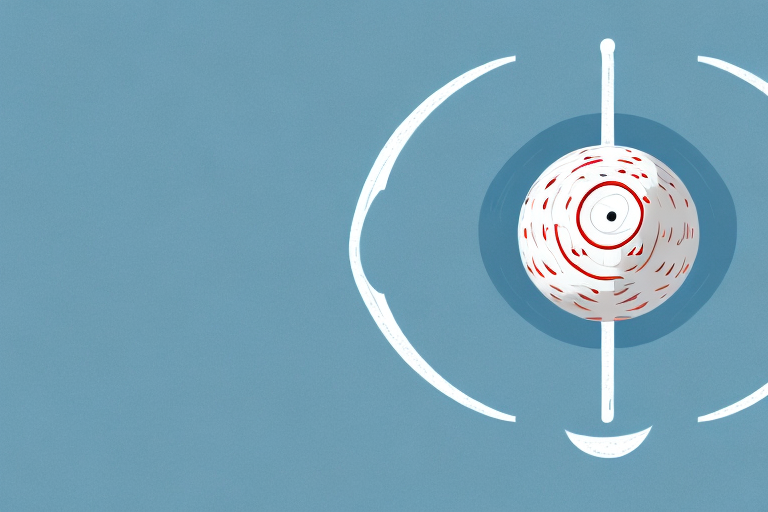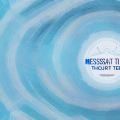If you’re experiencing sciatic nerve pain, you’re not alone. The sciatic nerve is the largest nerve in the body and can be quite painful when inflamed or compressed. Fortunately, there are many ways to alleviate the pain, ranging from professional therapy sessions to do-it-yourself treatments at home. One popular method of relieving sciatic nerve pain is trigger point lacrosse ball therapy.
Understanding Sciatica and Trigger Points
Sciatica is a common condition that affects many people, causing pain, numbness, or tingling sensations that often radiate through the buttocks and down one leg. The pain can range from mild to severe, and it’s caused by pressure or irritation of the sciatic nerve, which runs from the lower back to the feet. Trigger points, on the other hand, are taut bands of muscle fibers that cause pain and discomfort when pressed or strained. Trigger points can form in any muscle, including those in the lower back and hips.
It’s important to note that trigger points can actually contribute to the development of sciatica. When trigger points form in the muscles surrounding the sciatic nerve, they can compress the nerve and exacerbate the symptoms of sciatica. Therefore, treating trigger points through massage, stretching, or other therapies can be an effective way to alleviate sciatic pain and prevent future flare-ups.
What is a Lacrosse Ball and How Can It Help with Pain Relief?
A lacrosse ball is a small, hard ball that’s commonly used in the sport of lacrosse. However, it can also be a valuable tool for relieving muscle tension and pain. When used in trigger point lacrosse ball therapy, the ball is placed on specific areas of the body, such as the lower back or buttocks, and pressure is applied. This pressure helps to release tension and knots in the muscles, providing relief from pain and discomfort.
In addition to trigger point therapy, lacrosse balls can also be used for myofascial release. This technique involves rolling the ball over tight or sore muscles to help break up adhesions and improve blood flow. It’s a great way to loosen up tight muscles before a workout or to help speed up recovery after a tough training session. Lacrosse balls are also affordable and easy to find, making them a convenient tool for at-home pain relief and muscle recovery.
Identifying Trigger Points for Sciatic Nerve Pain Relief
Identifying trigger points can be tricky, as they often cause referred pain, or pain in a different area than where the trigger point is located. However, there are a few common areas where trigger points tend to form for those experiencing sciatic nerve pain. These include the gluteus muscles, the piriformis muscle, and the hamstrings. Once you’ve identified the trigger points causing your pain, you can focus on releasing them with the lacrosse ball therapy.
It’s important to note that trigger points can also be caused by poor posture, repetitive motions, and muscle imbalances. For example, sitting for long periods of time can cause the gluteus muscles to become tight and develop trigger points, leading to sciatic nerve pain. Strengthening weak muscles and correcting posture can help prevent trigger points from forming in the first place. Additionally, incorporating stretching and foam rolling into your daily routine can also help alleviate sciatic nerve pain by releasing tension in the muscles.
Proper Technique for Using a Lacrosse Ball to Relieve Sciatic Nerve Pain
Using a lacrosse ball to relieve sciatic nerve pain requires proper technique to avoid causing further discomfort. To start, lie on your back with knees bent and feet flat on the floor. Place the lacrosse ball under your glutes, finding the tender spots that cause pain. Gradually apply pressure, using your body weight to roll the ball around the trigger points. Breathe deeply and rhythmically, and repeat for up to 5 minutes on each buttock.
It is important to note that using a lacrosse ball to relieve sciatic nerve pain should not be the only form of treatment. It is recommended to also incorporate stretching and strengthening exercises, as well as seeking medical advice from a healthcare professional. Additionally, if the pain persists or worsens, it is important to stop using the lacrosse ball and seek medical attention immediately.
Other Techniques for Relieving Sciatic Nerve Pain at Home
While trigger point lacrosse ball therapy can be effective, it’s not the only technique for relieving sciatic nerve pain at home. Other methods include stretching exercises, yoga, and hot or cold compresses. Stretching exercises that focus on the lower back, hips, and legs can help alleviate the pain by promoting flexibility and reducing compression of the sciatic nerve. Yoga, in particular, can be especially effective, as it combines stretching and relaxation techniques to ease muscle tension and promote healing.
In addition to these techniques, maintaining good posture and avoiding prolonged sitting or standing can also help prevent and alleviate sciatic nerve pain. It’s important to take breaks and move around frequently throughout the day, and to use proper ergonomics when sitting or standing for extended periods of time. Additionally, incorporating low-impact exercises such as walking or swimming into your routine can help strengthen the muscles that support the lower back and reduce the risk of future pain.
Benefits of Trigger Point Therapy for Managing Chronic Sciatic Nerve Pain
Trigger point lacrosse ball therapy can be especially beneficial for those experiencing chronic sciatic nerve pain. Regular use of this technique can help to break up scar tissue and adhesions in the muscles, promoting healing and reducing pain over time. Additionally, trigger point therapy can lead to improved mobility and range of motion, enhancing the overall quality of life for those suffering from chronic pain.
It is important to note that trigger point therapy should be used in conjunction with other forms of treatment, such as physical therapy and medication, for optimal results. It is also recommended to consult with a healthcare professional before starting any new treatment regimen, especially if you have a pre-existing medical condition or are taking medication.
When to Seek Professional Help for Sciatic Nerve Pain
While it’s possible to manage sciatic nerve pain at home with techniques like trigger point therapy and stretching, there are times when seeking professional help is necessary. If your pain is severe or debilitating, or if it’s accompanied by other symptoms like loss of bladder or bowel control, it’s important to seek medical attention right away. In some cases, surgery may be necessary to alleviate the pain and restore mobility.
Preventing Future Episodes of Sciatic Nerve Pain with Regular Trigger Point Therapy Sessions
Preventing future episodes of sciatic nerve pain requires ongoing maintenance and care of the muscles and tissues in the lower back and hips. Regular trigger point therapy sessions, in conjunction with stretching and exercise, can help to keep the muscles supple and reduce the risk of developing trigger points or other forms of tension. Consider incorporating trigger point therapy into your regular self-care routine to prevent future episodes of sciatic nerve pain.
Additional Resources for Managing Chronic Pain from Sciatica
If you’re suffering from chronic pain due to sciatica, you may benefit from additional resources like support groups, online forums, or professional counseling. These resources can provide a safe and supportive environment for discussing your pain and getting advice and encouragement from others who are experiencing similar challenges. Don’t hesitate to seek help and support in managing your chronic pain.





